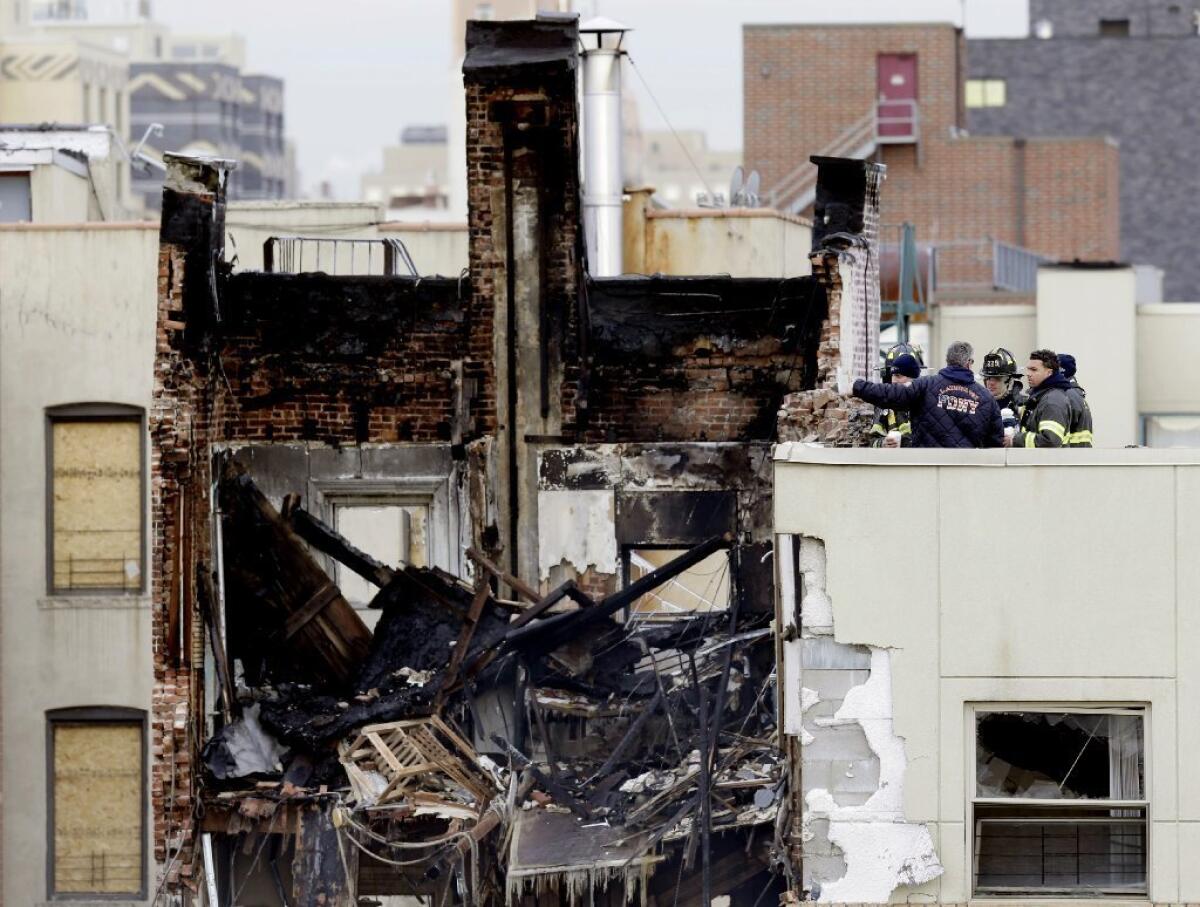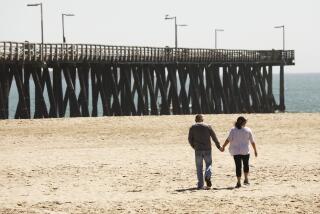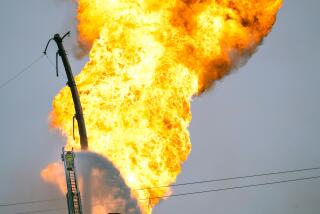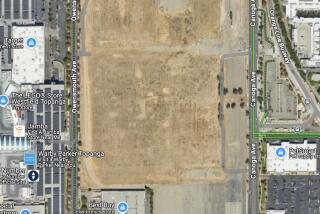Gas had been leaking at N.Y. blast site, NTSB soil tests show

NEW YORK--Soil tests done in the hours immediately following a building explosion in Manhattan showed high concentrations of natural gas, indicating that there had been a leak going on for some time before the fatal blast, investigators said Friday.
Eight people were killed in Wednesday’s explosion on Park Avenue, between 116th and 117th streets, and several remained hospitalized Friday. More than 100 people were shut out of their homes in buildings near the blast site as gas and heat were shut off while work crews removed rubble.
At a news briefing, Robert Sumwalt of the National Transportation Safety Board, the federal agency that investigates pipeline explosions, said utility workers conducted so-called bar testing in at least 50 locations in the immediate vicinity of the blast. That involved pushing inch-thick bars into the ground, 18 to 24 inches deep, to measure natural gas levels.
In at least five holes they found the presence of natural gas, and in some holes the concentration of gas was up to 20%, Sumwalt said.
“Normally, the soil in New York City … would have zero concentration of natural gas,” he said.
Until the mountain of debris left over from the explosion is cleared away, investigators will not be able to get close enough to the underground pipelines to discover the location of the leak and its possible cause.
By Friday afternoon, about 70% of it had been carted away to undergo forensic testing.
Earlier, New York Fire Commissioner Sal Cassano said the age of the pipes running along the block was being looked at along with other factors as possibly contributing to the cause of the explosion.
The main pipeline running beneath that stretch of Park Avenue was cast iron and installed in 1887. Smaller pipelines feeding the affected buildings were installed in 1991.
Many of the pipes beneath New York’s streets date back more than 100 years, and both Cassano and Sumwalt have said age alone should not be problematic.
“If a pipe is properly managed … the age should not be a factor,” Sumwalt said.
Cassano, speaking earlier on WNYC radio, said, “Age alone doesn’t tell you the condition.” He also said investigators had to look at the “environment” around the pipe to learn if ground shifts or other conditions had caused a leak or puncture.
Seven of the eight people killed have been identified. They are: Andreas Panagopoulos, 44, a musician; Griselde Camacho, 44, a security officer at Manhattan’s Hunter College; Carmen Tanco, 67, a dental hygienist; Rosaura Hernandez-Barrios, 21, a restaurant cook; her mother, Rosaura Barrios, 44; Alexis “Jordy” Salas, a 22-year-old student whose wife is pregnant; and George Amadeo, 44, a handyman.
Oscar Hernandez, 15, who is Rosaura Hernandez-Barrios’ brother, remains hospitalized in critical condition.
The name of the eighth victim who died, a woman, has not been released.
More to Read
Sign up for Essential California
The most important California stories and recommendations in your inbox every morning.
You may occasionally receive promotional content from the Los Angeles Times.











